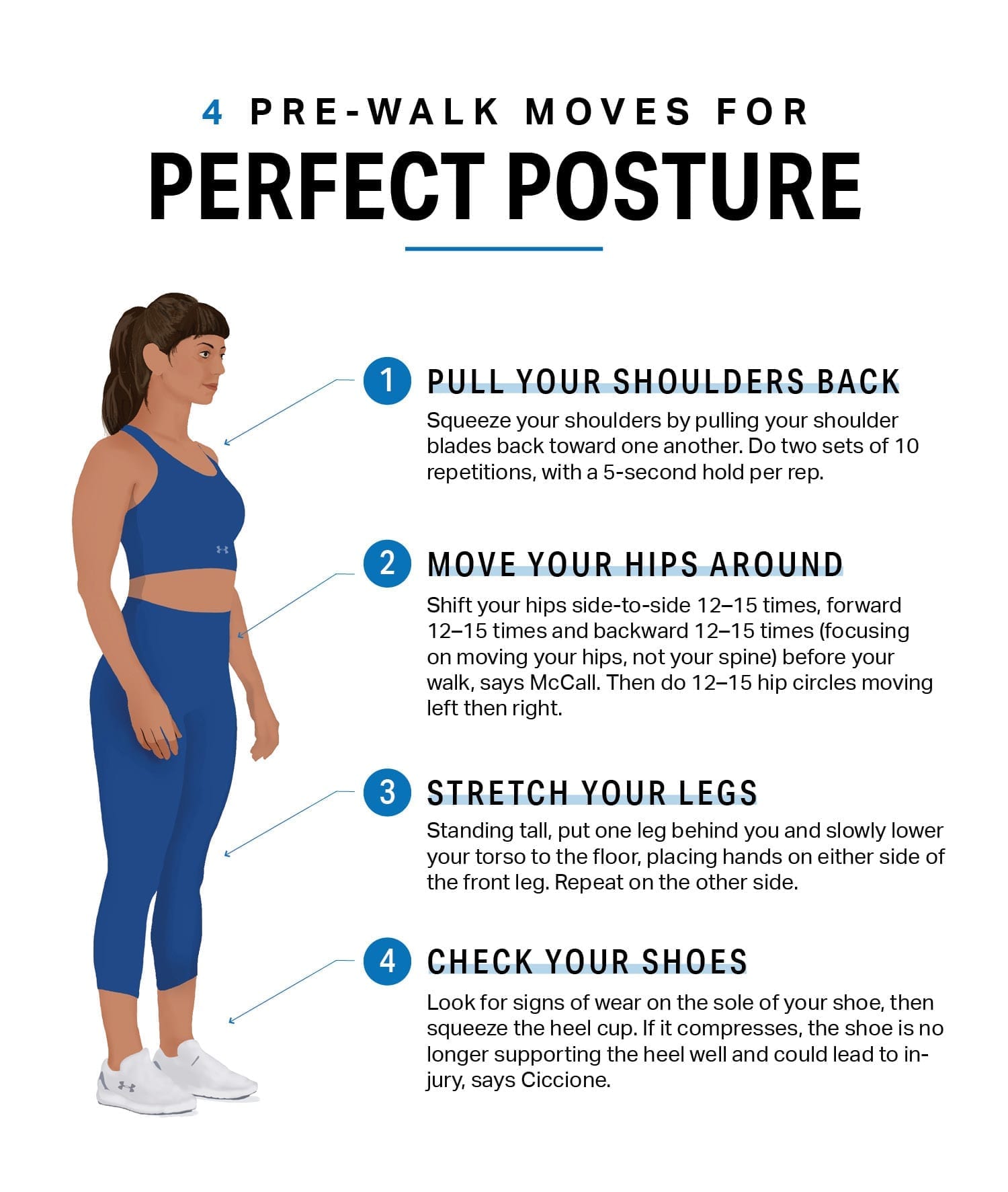All movement — whether you’re walking, running, cycling or swimming — begins from a position of static or stationary posture, says Pete McCall, certified strength and conditioning specialist, an ACE-certified trainer and author of “Smarter Workouts.” It’s important to make sure your starting position is in good shape so your movement doesn’t suffer.
“Poor posture can lead to increased fatigue,” explains Christina Ciccione, a certified strength and conditioning specialist and physical therapist at Professional Physical Therapy in Baldwin, New York. “The body must work harder and expend more energy to keep you upright in the proper position while fighting poor posture habits, which drains energy quickly.”
We all have our individual imbalances (that arise from desk jobs, favoring certain forms of exercise or daily habits like hunching over your phone when texting). But generally, performing these four pre-walk moves can ensure you’ll start your steps from a prime postural position, which means you’ll feel energized — not depleted — by the time you finish.
Plus, they only take a few minutes to complete so you can have more time on the road.

PULL YOUR SHOULDERS BACK
The benefits: Shoulder squeezes can improve your body’s ergonomics by strengthening both the rhomboids and trapezius muscles, counteracting that all-too-common rounded-shoulder posture, says Ciccione. Moreover, “this move decreases our tendency to assume a slouched posture while walking, which could lead to low-back pain.”
MOVE YOUR HIPS AROUND
The benefits: These movements rotate the hips, which are highly involved in walking but are often in a locked up seated position all day. “Creating mobility in all three planes of motion will help lubricate the hip joints by creating warmth,” explains McCall. “It will also allow for improved mobility and range of motion during the walk.”
STRETCH YOUR LEGS
The benefits: This move, also known as runner’s lunge, is a multi-muscle stretch that targets your hip flexors (probably tight from sitting) and hamstrings (notoriously tight in walkers and runners), calves and glutes (key for proper walking form), she explains.
CHECK YOUR SHOES
The benefits: Comfortable sneakers are a key to preventing imbalances, which could be the reason your hip, ankle or knee aches, Ciccione says. Another good rule of thumb for making sure you have the proper gear: “A pair of workout shoes should not be worn for more than 500 miles of activity or for much longer than about six months of regular activity.”




